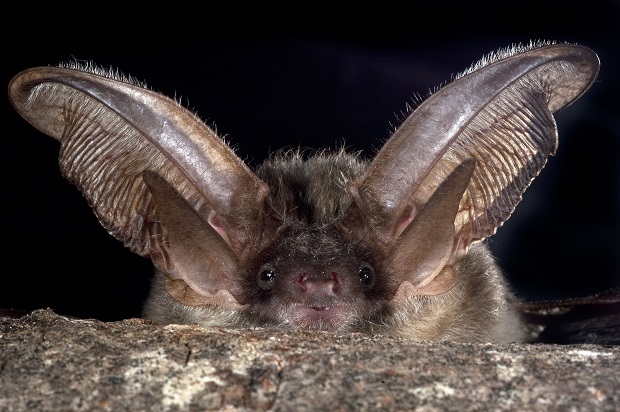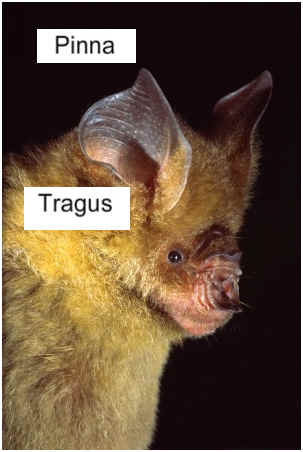
Can Bats Hear?
Bats can hear exceptionally well. Bats not only hear well, but they are also the most sensitive of all mammals when it comes to distinguishing high frequencies. A bat’s hearing is more than seven times keener than a human’s sense of hearing on the high-frequency scale.
How Do Bats Communicate?
Some bat species use their keen sense of hearing to both navigate and find food in a process called echolocation. The bat emits a high-pitched sound through its mouth or nose during this process. This ultrasonic sound will then travel through the air until it hits an object, at which time it will bounce back to the bat for interpretation. Once the bat sends out an ultrasonic sound, the ears help the bat interpret the object’s identity, size, and location from which the ultrasonic sound bounces.
The Anatomy of a Bat’s Ear
The bat’s outer ear is instrumental in echolocation. The role of the external portion of the ear is to funnel sound. The bat’s outer ear consists of two parts, the pinna, and the tragus. The pinna is the large outer portion of the ear. The bat’s ear also has a tragus, just like a human ear. The tragus is that fleshy protrusion on the inner side of our ears next to the cheekbone.

Research conducted by Chen Chiu and Cynthia Moss of the University of Maryland has demonstrated that the bat’s ears and a keen sense of hearing are instrumental to echolocation. To test how the ears function in echolocation and hunting prey, the researchers deflected six brown bats’ tragus to discover that the bat’s ability to capture prey dropped dramatically. The tragus-deflected bats had difficulty localizing their targets as effectively as they do under normal conditions.
The Bat’s Hearing Range Compared to Human Hearing
A bat’s hearing is more than seven times keener than a human’s sense of hearing on the high-frequency scale. Humans can hear frequencies between 20-20,000 Hertz, 16,000 Hertz being the highest frequency that most people can distinguish. On the other hand, a bat can hear frequencies between 1,000-150,000 Hertz. Dogs that are generally thought to have a keen sense of hearing don’t even come close. The highest frequency a dog can hear is double that of humans, or 46,000 Hertz.
Resources
- Mu¨ ller, Rolf . “A numerical study of the role of the tragus in the big brown bat.” Journal of Acoustical Society of America 116.6 (2004): 3712. Print.
- “Molecular Evolution Is Echoed In Bat Ears.” Science Daily: News & Articles in Science, Health, Environment & Technology. N.p., n.d. Web. 28 Sept. 2011. <http://www.sciencedaily.com/releases/008/09/080904102756.htm>
- “Project: The Role of Tragus in Echolocating Bat, Eptescus Fuscus.” College of Behavioral and Social Sciences – University of Maryland – College of Behavioral & Social Sciences. N.p., n.d. Web. 28 Sept. 2011. <http://www.bsos.umd.edu/psyc/batlab//project/tragus.html>
- “Simple Bat Detector.” NJSAS. N.p., n.d. Web. 28 Sept. 2011. <http://njsas.org/projects/bat_detector>
Expert Opinion
“If hearing were an Olympic event, echolocating bats would be strong medal contenders. Their ears are tuned to higher sound frequencies than those of any other mammals because they need to listen to the returning echoes of their ultra-sonic calls.”
Professor Gareth Jones of the University of Bristol and Dr Stephen Rossiter of Queen Mary University of London; Molecular Evolution is Echoed in Bat’s Ears; ScienceDaily.com





